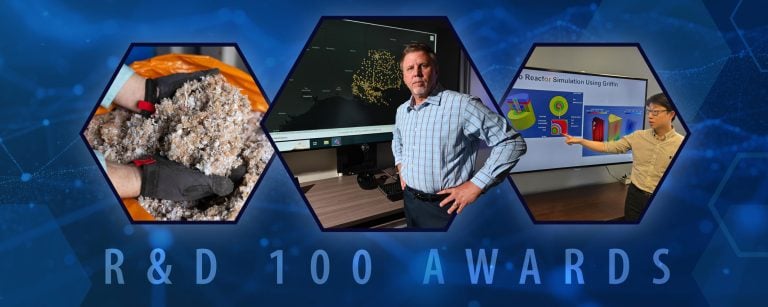The ability to take an idea and make it tangible is important to INL research scientist Dr. Catherine Riddle. Working as a radiochemist, she has laid a foundation using specific techniques to create new technologies. In her personal life, a passion for photography has allowed her to do the same – using her eye for beauty to create photographs to inspire and share with others.
Photography has always been a focal point in Riddle’s life. At a very young age, she was compelled to capture the beauty of the world around her on film. In junior high school, she quickly found a love for photography, stemming from her father’s passion for his job as a high school science and art teacher. “I was always hooked on art, and everything I saw was framed in a picture. It still is.”

Because of limited access and the cost of developing color photography, Riddle chose black and white photography to spark a new understanding and love for her hobby.
“I’m from the era where there was no digital,” Riddle said. “I shot rolls of film that I developed by hand. I printed a contact sheet, chose which ones I liked, and then went through multiple stages of development to get a final print.”

Like so many photographers who are dedicated to their craft, she relishes the opportunity to watch her art come to life. Riddle says the same thing is true for people who work in the STEM fields.
“I think that all scientists have that artistic side of their brain, and what makes them good at creative thinking in science also makes them talented artists — whether they paint, do photography, play music or use other artistic outlets,” she said.
Riddle is adamant that while the drive to create is universal within scientists and artists, different people are drawn to different kinds of art. “Art speaks to everybody differently. Whatever it is that they do, it speaks directly to them, even though it may not speak to anybody else in the same way.”

Riddle revels in the unusual. She enjoys art that stands out and strays from the norm. She’s able to channel that in her photos. “I like abstract photography, including scenes with unusual lighting or reflections, but I also love photos that tell a story. If it is a simple landscape, it has to have an unusual aspect that stands out.”
A few years ago, Riddle and her husband realized a dream to travel to Colonial Williamsburg, Virginia. Colonial Williamsburg is a living-history museum and visitors to the town are able to interact with people dressed in Colonial garb who reenact aspects of the historical period of our Founding Fathers.
While looking through the photos she took during their stay, she was struck by one specific shot that truly shows that a picture is worth so much more than a thousand words. During a daily march of reenactors in red coats, a young boy with matching hat stepped out to join the group.

“He wanted to be a part of history,” Riddle said. “Considering he was African-American, his history would’ve been much different at that point in time and place. Sometimes you don’t truly see the impact (the story) of a photo until after the moment has passed.”
While talent and passion are important, any benchtop scientist or photographer will tell you: The equipment you use matters. In 2000, Riddle began competing in the Eastern Idaho State Fair photography contest in the amateur category.
“I started with a very simple digital camera,” she said. “The first few years my photos did not do very well.” When she decided to upgrade to her first Nikon, the decision seemed to pay off. Riddle now competes in the fair’s advanced amateur photography division, and has won multiple awards with the exception of the grand champion prize.
Whether it’s photography or science, Riddle’s passion drives her efforts to learn, to improve and to find new ways to inspire.
Hobbies are fulfilling, and fulfilled people make more productive employees. Hobbies unearth hidden skills, alleviate stress, unite you with others, and improve quality of life — all things that will help you function better at work. See other stories about Idaho National Lab employees.





